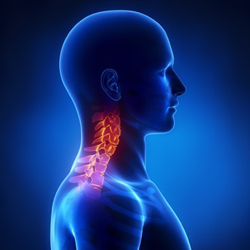
By Kure Clinic
CERVICAL MYELOPATHY
Cervical myelopathy is a condition that occurs when there is compression or damage to the spinal cord in the neck region. This can cause a variety of symptoms related to nerve dysfunction in the upper extremities, including weakness, numbness, and tingling.
Common causes of cervical myelopathy include degenerative changes in the spine, such as herniated discs, spinal stenosis, and arthritis, as well as traumatic injuries to the neck.
The diagnosis of cervical myelopathy typically involves a combination of physical examination, imaging studies such as MRI, and nerve function testing.
The role of physiotherapy in the management of cervical myelopathy involves:
It is important to note that the effectiveness of physiotherapy for cervical myelopathy may vary depending on the severity and underlying cause of the condition, and treatment may be supplemented with medications or surgical intervention as needed.
SYMPTOMS OF CERVICAL MYELOPATHY
The symptoms of cervical myelopathy can vary depending on the severity and location of the spinal cord compression or damage. Some common symptoms of cervical myelopathy include:
These symptoms may develop gradually over time or may come on suddenly, and may worsen with activity or changes in posture. It is important to seek medical attention if you experience any of these symptoms, as early treatment can help prevent the condition from worsening.
CAUSES OF CERVICAL MYELOPATHY
Cervical myelopathy is typically caused by compression or damage to the spinal cord in the neck region. This compression or damage can be caused by a variety of factors, including:
It is important to identify the underlying cause of cervical myelopathy to develop an effective treatment plan.
ROLE OF PHYSIOTHERAPIST
The role of a physiotherapist in the management of cervical myelopathy is important in improving mobility, strength, and balance, and reducing pain and other symptoms associated with the condition. Here are some specific ways in which a physiotherapist can help:
A physiotherapist works closely with other healthcare professionals such as a neurologist or neurosurgeon to develop a comprehensive treatment plan that addresses the patient’s unique needs and goals.
ROLE OF CHIROPRACTOR
Chiropractors can play a role in the management of cervical myelopathy, but their role would be limited to the conservative treatment of the condition.
Chiropractors primarily focus on the diagnosis and treatment of musculoskeletal disorders, especially those involving the spine. They use manual manipulation and other techniques to restore joint mobility and alleviate pain. In the case of cervical myelopathy, a chiropractor may use cervical manipulation and other manual therapies to relieve pain and improve spinal mobility.